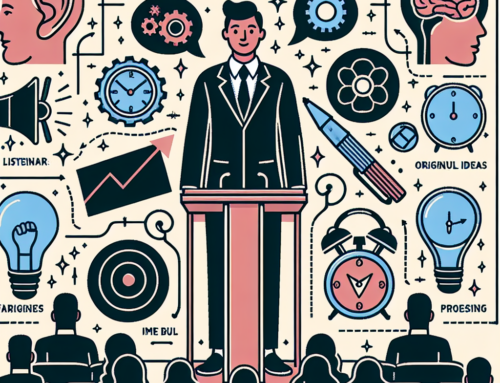
Time Management Strategies for Busy Professionals
Time management is a crucial skill for busy professionals striving to balance their work responsibilities with personal growth. The demands of a fast-paced career can often leave little room for self-improvement, but with the right strategies, it is possible to carve out time for personal development. One effective approach is to prioritize tasks by distinguishing between what is urgent and what is important. This method, often referred to as the Eisenhower Matrix, helps professionals focus on high-impact activities that contribute to long-term goals rather than getting bogged down by immediate but less significant tasks.
Another key strategy is to set clear, achievable goals. By breaking down larger objectives into smaller, manageable tasks, professionals can make consistent progress without feeling overwhelmed. This approach not only makes the process of personal development more manageable but also provides a sense of accomplishment as each small task is completed. Additionally, using tools such as to-do lists or digital task managers can help keep track of these goals and ensure that nothing falls through the cracks.
Incorporating time blocks into your daily schedule can also be highly effective. By dedicating specific periods to different activities, professionals can ensure that they allocate time for both work and personal development. For instance, setting aside an hour each morning for reading or skill-building can create a routine that becomes a natural part of the day. This method also helps in minimizing distractions, as it allows for focused periods of work followed by breaks, which can enhance productivity and reduce burnout.
Moreover, leveraging technology can significantly aid in time management. There are numerous apps and tools designed to help busy professionals stay organized and efficient. Calendar apps can be used to schedule meetings and deadlines, while project management tools can help track progress on various tasks. Additionally, setting reminders and alarms can ensure that important activities are not overlooked. By integrating these tools into daily routines, professionals can streamline their workflow and free up time for personal development.
Delegation is another powerful strategy for managing time effectively. By entrusting certain tasks to colleagues or team members, professionals can focus on higher-priority activities that require their unique skills and expertise. This not only helps in managing workload but also fosters a collaborative work environment. It is important, however, to delegate wisely by considering the strengths and capabilities of team members to ensure that tasks are completed efficiently.
Furthermore, learning to say no is an essential aspect of time management. Busy professionals often find themselves overwhelmed by taking on too many commitments. By setting boundaries and being selective about the tasks and projects they agree to, they can protect their time and energy for activities that align with their personal and professional goals. This practice can lead to a more balanced and fulfilling life.
Lastly, self-care should not be overlooked in the pursuit of personal development. Ensuring adequate rest, exercise, and relaxation is vital for maintaining the energy and focus needed to manage time effectively. By prioritizing well-being, professionals can enhance their overall productivity and create a sustainable approach to personal growth.
In conclusion, time management is a multifaceted skill that requires a combination of prioritization, goal-setting, routine-building, technology use, delegation, boundary-setting, and self-care. By implementing these strategies, busy professionals can find the time to invest in their personal development, ultimately leading to a more balanced and rewarding life.
Effective Goal Setting Techniques for Personal Growth
Effective goal setting is a cornerstone of personal development, especially for busy professionals who often juggle multiple responsibilities. The process of setting and achieving goals can seem daunting, but with the right techniques, it becomes a manageable and rewarding endeavor. To begin with, it is essential to understand the importance of setting SMART goals. SMART stands for Specific, Measurable, Achievable, Relevant, and Time-bound. By ensuring that your goals meet these criteria, you create a clear roadmap that guides your actions and keeps you focused.
Transitioning from the concept of SMART goals, let’s delve into the specifics. A specific goal is one that is clearly defined and unambiguous. For instance, rather than setting a vague goal like ”improve my skills,” you might aim to ”complete an online course in project management within three months.” This specificity provides a clear target to strive for. Moreover, measurable goals allow you to track your progress and stay motivated. By setting milestones and regularly reviewing your achievements, you can see how far you’ve come and what still needs to be done.
In addition to being specific and measurable, goals should also be achievable. Setting overly ambitious goals can lead to frustration and burnout, especially for busy professionals. It is crucial to set realistic targets that challenge you but are still within reach. For example, if you are aiming to read more books, setting a goal to read one book per month might be more attainable than trying to read one book per week. This approach ensures steady progress without overwhelming yourself.
Furthermore, relevance is a key factor in effective goal setting. Your goals should align with your broader personal and professional aspirations. By focusing on what truly matters to you, you ensure that your efforts are directed towards meaningful outcomes. For instance, if career advancement is a priority, setting goals related to acquiring new skills or networking within your industry would be highly relevant. This alignment keeps you motivated and ensures that your efforts contribute to your long-term success.
Equally important is the time-bound aspect of goal setting. Establishing deadlines creates a sense of urgency and helps prioritize tasks. Without a timeframe, goals can easily be postponed indefinitely. By setting specific deadlines, you create a structured plan that encourages consistent progress. For example, if you aim to improve your public speaking skills, you might set a goal to deliver a presentation at a local event within the next six months. This deadline provides a clear endpoint and motivates you to take actionable steps.
Transitioning to another crucial technique, breaking down larger goals into smaller, manageable tasks can significantly enhance your ability to achieve them. This approach, often referred to as chunking, makes daunting goals more approachable. For instance, if your goal is to write a book, breaking it down into smaller tasks such as outlining chapters, writing a certain number of words each day, and revising sections can make the process less overwhelming. By focusing on one small task at a time, you maintain momentum and steadily work towards your larger goal.
Lastly, it is important to regularly review and adjust your goals as needed. Life is dynamic, and circumstances can change. Periodically reassessing your goals ensures they remain relevant and achievable. This flexibility allows you to adapt to new challenges and opportunities, keeping your personal development journey on track.
In conclusion, effective goal setting is a powerful tool for personal growth, particularly for busy professionals. By setting SMART goals, breaking them down into manageable tasks, and regularly reviewing your progress, you can achieve meaningful and lasting personal development.
Building Resilience and Overcoming Stress in a Hectic Schedule
In the fast-paced world of busy professionals, building resilience and overcoming stress are essential skills that can significantly enhance both personal and professional life. The demands of a hectic schedule can often feel overwhelming, but with the right strategies, it is possible to navigate these challenges effectively. One of the first steps in building resilience is to develop a positive mindset. This involves recognizing that setbacks and challenges are a natural part of life and viewing them as opportunities for growth rather than insurmountable obstacles. By adopting a growth mindset, you can transform stress into a catalyst for personal development.
Another crucial aspect of building resilience is maintaining a healthy work-life balance. It is easy to become consumed by work, especially when deadlines are looming and responsibilities are piling up. However, it is important to set boundaries and allocate time for relaxation and self-care. This might include engaging in hobbies, spending time with loved ones, or simply taking a few moments each day to unwind and recharge. By prioritizing self-care, you can prevent burnout and maintain the energy needed to tackle your professional responsibilities.
In addition to self-care, developing effective time management skills can greatly reduce stress. This involves setting clear goals, prioritizing tasks, and breaking larger projects into manageable steps. Utilizing tools such as calendars, to-do lists, and productivity apps can help you stay organized and focused. Moreover, learning to delegate tasks and seeking support from colleagues can alleviate some of the pressure and allow you to concentrate on high-priority activities.
Mindfulness and meditation are also powerful tools for building resilience and managing stress. These practices encourage you to stay present and focused, reducing the tendency to ruminate on past mistakes or worry about future uncertainties. Even a few minutes of mindfulness each day can improve your ability to handle stress and enhance your overall well-being. Additionally, incorporating physical activity into your routine can have a profound impact on your resilience. Exercise releases endorphins, which are natural mood lifters, and can help clear your mind, making it easier to approach challenges with a calm and focused mindset.
Furthermore, fostering strong social connections is vital for resilience. Having a support network of friends, family, and colleagues can provide emotional support and practical assistance during stressful times. Sharing your experiences and seeking advice from others can offer new perspectives and solutions that you might not have considered on your own. It is also important to practice gratitude and focus on the positive aspects of your life. Keeping a gratitude journal or simply taking a moment each day to reflect on what you are thankful for can shift your focus away from stress and towards the positive elements of your life.
Lastly, continuous learning and personal growth are key components of resilience. By seeking out new knowledge and skills, you can increase your confidence and adaptability, making it easier to navigate the challenges of a busy professional life. Whether through formal education, professional development courses, or self-directed learning, investing in your personal growth can provide a sense of accomplishment and purpose.
In conclusion, building resilience and overcoming stress in a hectic schedule requires a multifaceted approach that includes developing a positive mindset, maintaining a healthy work-life balance, practicing mindfulness, staying physically active, fostering social connections, and committing to continuous learning. By integrating these strategies into your daily routine, you can enhance your ability to manage stress and thrive in both your personal and professional life.
Enhancing Productivity Through Mindfulness and Meditation
In the fast-paced world of busy professionals, finding time for personal development can seem like an insurmountable challenge. However, enhancing productivity through mindfulness and meditation is not only achievable but also highly beneficial. By integrating these practices into your daily routine, you can unlock a new level of efficiency and well-being.
To begin with, mindfulness is the practice of being fully present and engaged in the moment, without judgment. It involves paying attention to your thoughts, feelings, and surroundings in a deliberate and focused manner. This heightened awareness can significantly improve your ability to manage stress, make better decisions, and maintain a positive outlook. For busy professionals, mindfulness can be a game-changer, as it helps to clear mental clutter and enhances concentration.
Transitioning to meditation, this practice involves dedicating a specific time to focus your mind and eliminate distractions. Meditation can take many forms, from guided sessions to silent sitting, and even walking meditations. The key is to find a method that resonates with you and fits into your schedule. Regular meditation has been shown to reduce stress, improve emotional health, and increase attention span. For those juggling multiple responsibilities, these benefits can translate into more effective time management and a greater sense of control over your workload.
Incorporating mindfulness and meditation into your daily routine doesn’t have to be time-consuming. Even a few minutes a day can make a significant difference. For instance, starting your day with a short meditation session can set a positive tone and help you approach tasks with a clear and focused mind. Similarly, taking mindful breaks throughout the day can prevent burnout and keep your energy levels steady. These breaks can be as simple as a few deep breaths, a brief walk, or a moment of silent reflection.
Moreover, technology can be a valuable ally in your mindfulness and meditation journey. There are numerous apps available that offer guided meditations, mindfulness exercises, and reminders to take breaks. These tools can help you stay consistent and make it easier to integrate these practices into your busy schedule. Additionally, many of these apps offer features that allow you to track your progress, providing a sense of accomplishment and motivation to continue.
Another important aspect to consider is the environment in which you practice mindfulness and meditation. Creating a dedicated space, even if it’s just a corner of your office or home, can enhance the effectiveness of these practices. This space should be free from distractions and conducive to relaxation. Personalizing it with items that promote calmness, such as plants, candles, or soothing music, can further enhance your experience.
Furthermore, it’s essential to approach mindfulness and meditation with an open mind and patience. The benefits may not be immediately apparent, but with consistent practice, you will likely notice improvements in your productivity and overall well-being. It’s also helpful to remember that these practices are not about achieving perfection but rather about making progress and finding balance.
In conclusion, enhancing productivity through mindfulness and meditation is a practical and effective strategy for busy professionals. By dedicating a small portion of your day to these practices, you can reduce stress, improve focus, and ultimately become more efficient in your personal and professional life. Embracing mindfulness and meditation can lead to a more balanced, fulfilling, and productive existence, making it well worth the investment of your time and effort.
Balancing Work and Personal Life for Optimal Development
Balancing work and personal life is a crucial aspect of personal development, especially for busy professionals who often find themselves stretched thin between demanding job responsibilities and personal commitments. Achieving this balance is not only essential for maintaining mental and physical health but also for fostering long-term career growth and personal satisfaction. To begin with, it is important to recognize that personal development is a continuous journey that requires intentional effort and strategic planning. By integrating a few key practices into your daily routine, you can create a harmonious balance that promotes both professional success and personal well-being.
One effective strategy is to set clear boundaries between work and personal life. This can be achieved by establishing specific work hours and sticking to them as much as possible. For instance, if you decide that your workday ends at 6 PM, make a conscious effort to disconnect from work-related tasks and focus on personal activities thereafter. This separation helps to prevent burnout and ensures that you have time to recharge and engage in activities that bring you joy and fulfillment. Additionally, communicating these boundaries to colleagues and family members can help manage expectations and reduce the likelihood of work encroaching on personal time.
Another important aspect of balancing work and personal life is prioritizing self-care. Busy professionals often neglect their own needs in favor of meeting work deadlines or attending to family obligations. However, self-care is not a luxury but a necessity for optimal development. Incorporating regular exercise, healthy eating, and sufficient sleep into your routine can significantly enhance your overall well-being and productivity. Moreover, taking time for hobbies, relaxation, and social connections can provide a much-needed respite from the pressures of work and contribute to a more balanced and fulfilling life.
Time management is also a critical component of achieving work-life balance. Effective time management involves setting realistic goals, breaking tasks into manageable chunks, and using tools such as calendars and to-do lists to stay organized. By prioritizing tasks based on their importance and deadlines, you can ensure that you are focusing on what truly matters and avoiding the stress of last-minute rushes. Additionally, learning to delegate tasks and say no to non-essential commitments can free up valuable time for personal development activities.
Furthermore, embracing flexibility and adaptability can greatly enhance your ability to balance work and personal life. Life is unpredictable, and rigid schedules can sometimes lead to frustration and stress. By adopting a flexible mindset, you can better navigate unexpected challenges and make adjustments as needed. For example, if a work project requires extra attention, you might temporarily shift your personal activities to accommodate it, and then make up for the lost time later. This approach allows you to maintain a sense of control and balance even in the face of changing circumstances.
Lastly, seeking support from others can play a significant role in achieving work-life balance. Whether it’s through professional networks, mentorship, or personal relationships, having a support system can provide valuable insights, encouragement, and assistance. Sharing your goals and challenges with trusted individuals can help you gain new perspectives and find solutions that you might not have considered on your own.
In conclusion, balancing work and personal life is essential for the personal development of busy professionals. By setting clear boundaries, prioritizing self-care, managing time effectively, embracing flexibility, and seeking support, you can create a balanced and fulfilling life that promotes both professional success and personal well-being. Remember, personal development is a journey, and finding the right balance is key to enjoying the ride.
We have lots of exciting coming events in Entrepreneurship, Investing and Personal Development. You can find them all here:
www.swedishwealthinstitute.se/events




